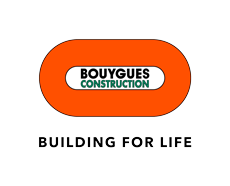Bouygues Construction will precast the caissons for the maritime infrastructure for the Monaco offshore extension project in Marseille
Marseille-Fos, the number one French port
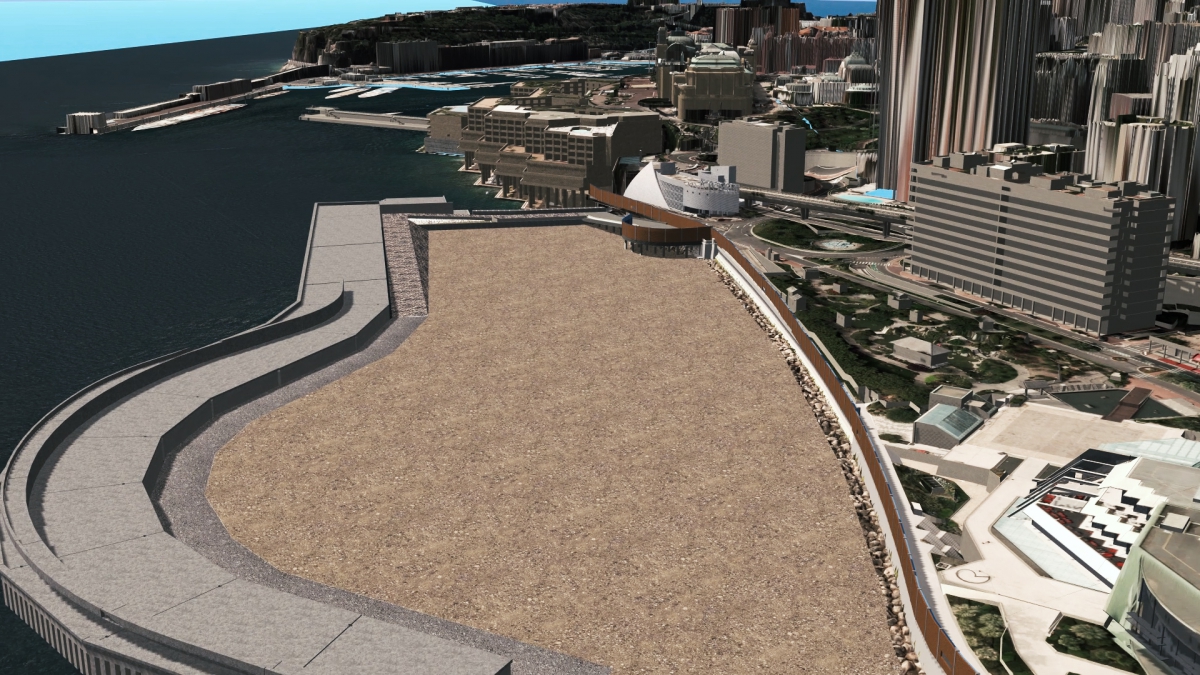
Marseille-Fos, the large French seaport, proved to be an ideal location, with the necessary space available, a 22.5-metre draught and infrastructure adapted to major industrial projects. The precasting unit will be installed in the east basins of the port. The area will be rented from the Marseille-Fos Port, whose personnel will also provide a number of services for Bouygues Travaux Publics. Offices, living quarters and site parking will be installed on a 11,900 m2 wharf in the northern outer harbour north, as well as a storage space.
A first in France
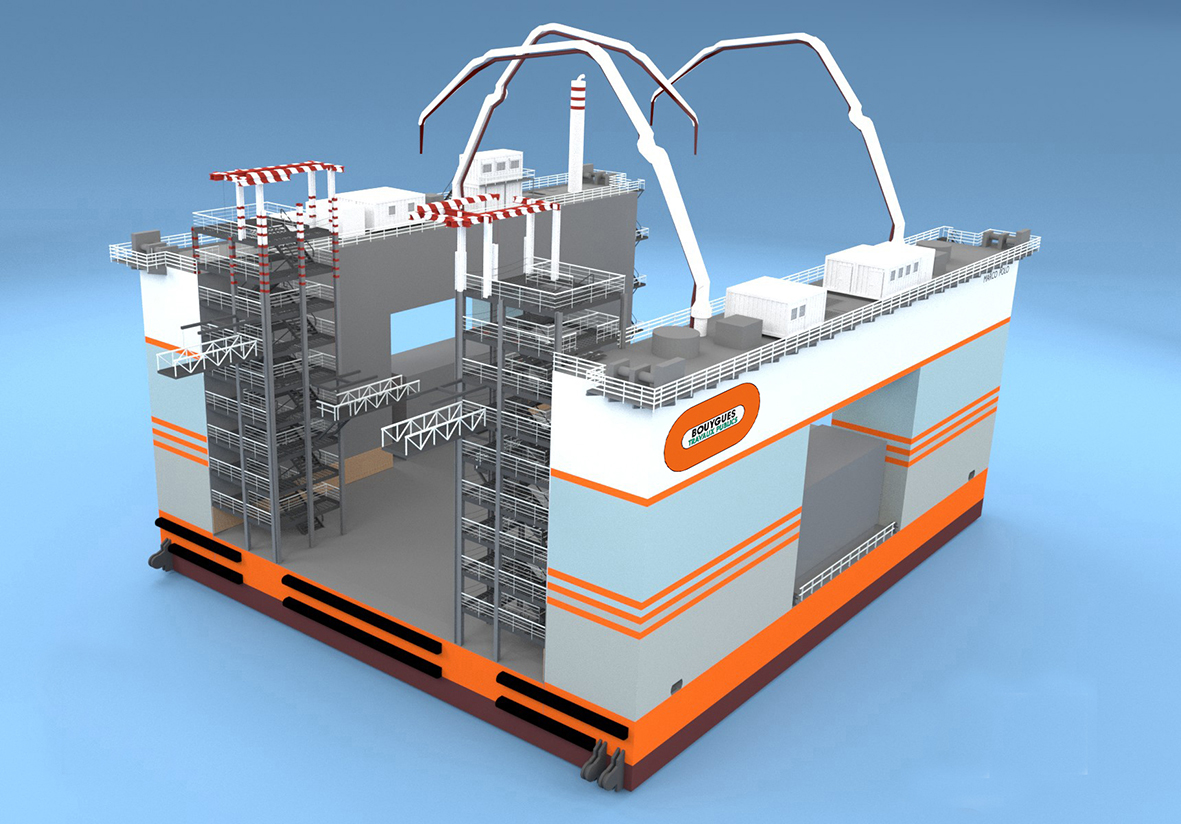 The caisson precasting area consists of a 10,000 m2 working space at the dock, which will be used primarily for preparing the reinforcements and assembling formwork for the caissons. It also includes a 32,000 m2 area of water, where a floating dock will be positioned (see photo). A first in France, this 56-metre-long, 50- metre-wide and 27-meter-tall floating dock will make it possible to prefabricate the 18 caissons.
The caisson precasting area consists of a 10,000 m2 working space at the dock, which will be used primarily for preparing the reinforcements and assembling formwork for the caissons. It also includes a 32,000 m2 area of water, where a floating dock will be positioned (see photo). A first in France, this 56-metre-long, 50- metre-wide and 27-meter-tall floating dock will make it possible to prefabricate the 18 caissons.
Eighteen 27-metre-tall caissons
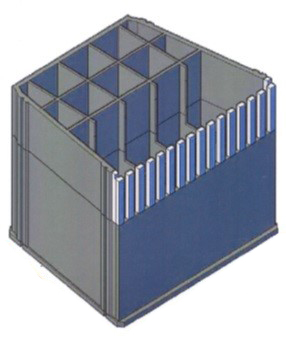 On dry land, the first step is to make the raft for each caisson and the first ten meters of concrete slab using sliding formwork. Under the weight of the caisson under construction, the deck of the floating dock is progressively immersed, enabling the casting of the concrete slabs to be completed. The caisson is then floated and removed from the floating dock, ready to be towed into position where the concrete pillars forming the Jarlan breakwater wall will be sunk. Before being towed to Monaco by sea, the caissons will be stored in the Léon Gouret basin.
On dry land, the first step is to make the raft for each caisson and the first ten meters of concrete slab using sliding formwork. Under the weight of the caisson under construction, the deck of the floating dock is progressively immersed, enabling the casting of the concrete slabs to be completed. The caisson is then floated and removed from the floating dock, ready to be towed into position where the concrete pillars forming the Jarlan breakwater wall will be sunk. Before being towed to Monaco by sea, the caissons will be stored in the Léon Gouret basin.
Starting
The installation of the site inside the port will begin in April 2017, starting with the offices and living quarters. In May, the first dredging and the execution of piles for cranes will start. The pontoons will be installed in July 2017 and the floating dock will be delivered in August. Manufacture of the caissons will get under way in September 2017.
700 jobs created, actions to promote employment
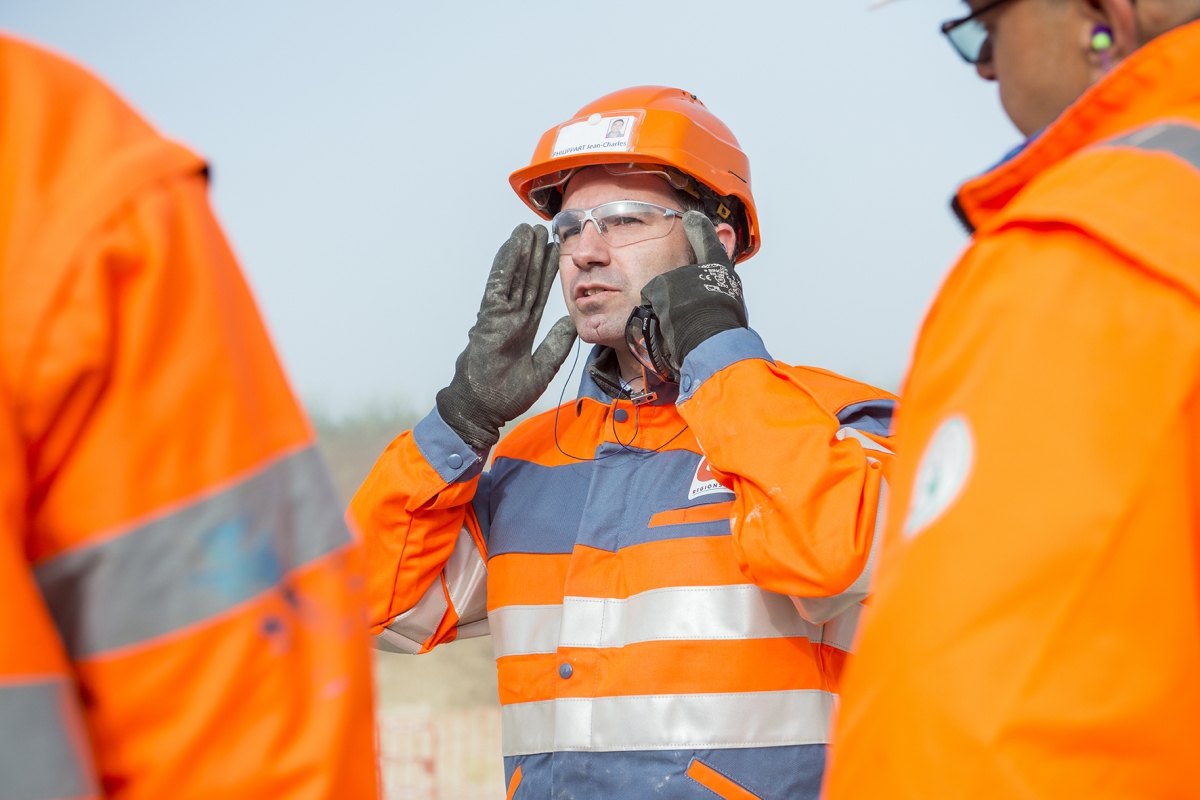 Production of the 18 caissons will start in September 2017 and will last until March 2019. It will require three shifts, working around the clock. In all, the project will generate more than 700 direct and indirect jobs, including more than 200 local hires throughout the period of the project and roughly twenty jobs on professional integration contracts. Professional training contracts will enable candidates to obtain a professional qualification in formwork. Organised in conjunction with local employment agencies, more than 30,000 hours of work will count towards the achievement of qualifications over the duration of the project. Training opportunities will also be offered to priority jobseekers in crane operation (3 posts) and site machine operation (3 posts), with practical experience provided onsite. The project team is working closely with the authorities to give priority to the long-term unemployed for certain positions (administrative agents, site management assistants, purchasers, concrete technicians, store keepers, traffic coordinators, etc.). All project personnel will be housed in Marseille and nearby.
Production of the 18 caissons will start in September 2017 and will last until March 2019. It will require three shifts, working around the clock. In all, the project will generate more than 700 direct and indirect jobs, including more than 200 local hires throughout the period of the project and roughly twenty jobs on professional integration contracts. Professional training contracts will enable candidates to obtain a professional qualification in formwork. Organised in conjunction with local employment agencies, more than 30,000 hours of work will count towards the achievement of qualifications over the duration of the project. Training opportunities will also be offered to priority jobseekers in crane operation (3 posts) and site machine operation (3 posts), with practical experience provided onsite. The project team is working closely with the authorities to give priority to the long-term unemployed for certain positions (administrative agents, site management assistants, purchasers, concrete technicians, store keepers, traffic coordinators, etc.). All project personnel will be housed in Marseille and nearby.
Economic benefits for local businesses
The total amount of the operation is €145 million, and many local and regional companies have already been and will be involved mobilized in this industrial project.
A number of companies played significant parts in the preparation of administrative files, such as the construction permit and the environmental protection and water legislation compliance declarations. They included VENATHEC (acoustics study – Aix-en-Provence), HYDROGEOTECHNIQUE (geotechnical survey – Saint Victoret), GEOENVIRONNEMENT (impact study – Aix-en-Provence), CREOCEAN (bathymetry and divers – La Seyne-sur-Mer), GEOMINES (pyrotechnics pollution – Six-Fours-Les-Plages) and ARCHITECTURE STOA (architect for building permits – Marseille).
With regard to marine engineering studies, d2m (Six-Fours-Les-Plages) was responsible for designing the floating dock. The engineering office is currently working on studies for mooring it, as well as the access pontoons and the concrete caissons after removal from the floating dock.
Several contractors will be involved in setting up the site, including CLOTURAIX (site fencing – Aix en Provence), EGFF (electrical installation – Rognac) and CRANE SERVICES (crane assembly – Aubagne).
Manufacture and supply of concrete will be shared by Lafarge and Cemex, companies that both operate ready-mix concrete plants at the port. Lafarge’s L’Estaque and Le Beausset quarries and its Port-la-Nouvelle and La Malle cement plants will also be involved. Deliveries will be made by road with support from local transport companies, but the total number of truck rotations will be limited to roughly 20 per day. All waste management will be managed in Marseille.
Suppliers and sub-contractors in the port of Marseille:
• Mooring services (Société Coopérative du Lamanage des Ports de Marseille et du Golf de Fos)
• Towing (Boluda)
• Assistance with unloading deliveries of reinforcements (MED Europe Terminal, - Marseille Manutention)
Supply and delivery of quarry materials for the maritime infrastructure
The construction of the maritime infrastructure in Monaco will also require substantial deliveries of rock, which will be used for the backfill, embankment and ballasting of the 18 caissons.
Materials removed after dredging operations in Monaco to provide a base for the caissons are graded 20/180. For ballasting the caissons, materials graded 0/20 will be used. The embankments of the reclaimed land will be constructed using rock graded 20/180 and 4/20.
These materials will be employed in two phases: the first between mid-September 2017 and March 2018, and the second from April 2018 to August 2019.
Two companies and regional sites have been chosen to supply and load these materials:
• Phase 1: approximately 1,560,000 tonnes of materials will be extracted from the JEAN LEFEBVRE Méditerranée quarry in Châteauneuf-les-Martigues. They will be loaded at Fos-sur-Mer (Quai de CARFOS) on boats owned by JAN DE NUL (capacity 30,000 tonnes per journey).
• For Phase 2: The SOMECA quarry at Revest for approximately 900,000 tonnes of materials. Shipments will leave the port of Brégaillon port at La Seyne-surMer using boats from JAN DE NUL (6,000 tonnes per journey) and SAIPEM (1,500 tonnes per journey).
